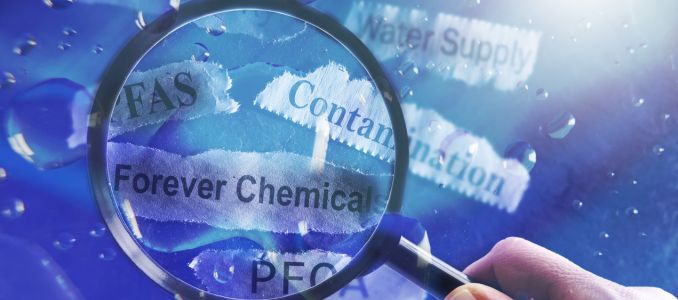
Turning the Tide on PFAS: How Statewide AFFF Takeback Initiatives Are Redefining Environmental Protection
Ohio, New Hampshire, and North Carolina are leading PFAS mitigation efforts with large-scale AFFF collection and destruction programs using verified supercritical water oxidation technology.
- By Dave Trueba
- Jun 20, 2025
Efforts to reduce environmental and health risks associated with per- and polyfluoroalkyl substances (PFAS) are accelerating at the state level. Ohio, New Hampshire, and North Carolina are launching coordinated takeback programs aimed at collecting and destroying aqueous film-forming foam (AFFF) used by fire departments.
PFAS, commonly referred to as “forever chemicals,” have been linked to serious health effects and are resistant to natural degradation. Their presence in firefighting foams has contributed to widespread soil and drinking water contamination.
National Context
The EPA has issued health advisories and proposed Maximum Contaminant Levels (MCLs) for six PFAS compounds under the Safe Drinking Water Act. In parallel, states have begun launching their mitigation strategies in response to mounting public concern and regulatory pressure.
Disposal methods such as incineration and landfilling have come under scrutiny, leading to increased demand for alternative destruction technologies that ensure complete PFAS breakdown.
State-Led Solutions
Ohio’s AFFF Takeback Program, launched in March 2024, is one of the first comprehensive statewide efforts of its kind. Spearheaded by the Ohio Environmental Protection Agency and supported by a $3 million environmental settlement, the program has collected AFFF from 130 fire departments across 54 counties.
New Hampshire began its program in 2024, collecting over 12,000 gallons of AFFF from more than 125 departments. Destruction is ongoing using supercritical water oxidation (SCWO), with third-party verification reporting destruction efficiency greater than 99.99%.
North Carolina initiated its program in 2025 through a partnership with the NC Collaboratory and the State Fire Marshal. After an initial 1,000-gallon phase, the program is scaling to process up to 60,000 gallons.
Destruction Technology and Oversight
All three states rely on SCWO as the primary treatment method. This approach uses extreme heat and pressure to break PFAS molecular bonds, converting them into water, carbon dioxide, and inert salts. The method avoids the risks associated with incineration or landfilling.
Each treated batch is tracked and verified, with participating fire departments receiving certificates of processing. Vendor selection emphasized proven operational performance, compliance with effluent standards, and the ability to scale.
Community and Regulatory Engagement
Program organizers in each state worked to ensure transparency and stakeholder involvement. Fire departments, environmental agencies, and local leaders have participated in webinars, media outreach, and site visits. Organizers say these efforts have helped increase public awareness and improve program participation.
Outlook
The takeback models in Ohio, New Hampshire, and North Carolina may serve as a blueprint for other states considering similar PFAS disposal programs. By combining verified technology with inter-agency collaboration and public engagement, these programs demonstrate a replicable strategy for managing legacy PFAS stockpiles.
About the Author
David Trueba joined the company in January 2023, and serves on the board and as President and Chief Executive Officer. David’s 20 year career has been in the allied chemical, materials, and environmental services industries. Prior to joining Revive, David was the Vice President and General Manager of Evoqua’s Pro-Act Environmental Solutions Division, where he led the mobile remediation and granular activated carbon business. He joined Evoqua in 2018 as the Regional GM of the high purity water treatment business in the west of US and Canada. Mr. Trueba held various positions of increasing responsibility in sales, marketing, product line management, purchasing, leading teams at Adams Rite Aerospace, Entek International, and Celanese. David served on the non-profit board of Young Entrepreneur Business Week (YEBW). He has a M.B.A from the Naveen Jindal School of Management at the University of Texas at Dallas, and a B.S. in Chemistry from Texas A&M University. He holds five patents on process chemistry technology and optimization.